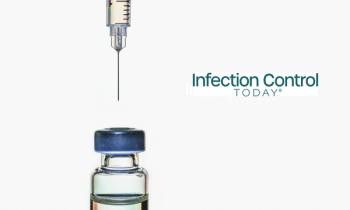
Nontuberculous mycobacteria: The Complex Diagnostic Challenge
Recent advances in diagnostic techniques offer a rapid and accurate method for identifying nontuberculous mycobacteria species, potentially accelerating the diagnosis and treatment of infections.
Nontuberculous mycobacteria (NTM) infections are becoming increasingly common, with studies from North America, Europe, and Asia demonstrating a significant rise in cases in the last few decades. As the name suggests, NTM are a group of bacteria from the Mycobacteriaceae family that do not cause either tuberculosis (TB) or leprosy. While NTM are typically harmless and not contagious, some species can cause disease, primarily affecting the lungs. Although healthy individuals can develop symptoms from NTM infections, immunocompromised individuals or people with preexisting lung conditions are more vulnerable to serious health complications.
An increase in reported cases of NTM infection has brought these bacteria into the spotlight, and scientists are working to overcome the complex diagnostic challenges that hinder the accurate and timely identification of these bacteria. Recent advancements in diagnostic technologies, which offer fast and precise species-level detection, could help enable targeted therapy and ultimately improve clinical outcomes for patients suffering from NTM infections.
Species of concern
Out of over 190 recognized NTM species, only about 30 are clinically significant. Most species, like M gordonae, are usually nonpathogenic; however, other common species, such as M avium and M abscessus, can cause pulmonary disease and may require treatment. As NTM species vary in pathogenicity and their antibiotic resistance, differentiation of species is crucial. NTM infections are typically treated using multiple antibiotics over a period of 12 to 24 months. As different species vary in their response to treatments, therapy needs to be tailored to the NTM strain causing the disease.
Therefore, the disease-causing NTM species must be quickly and accurately identified to minimize time wasted on ineffective treatment, improve patient care, and reduce antibiotic misuse. It is also important that nonpathogenic NTM species, allowing clinicians to concentrate on accurately identifying the infectious agent and the disease's cause of the disease and implementing a suitable and effective treatment. Although still limited, the latest diagnostic tests can differentiate NTM species and subspecies sufficiently to help guide the clinician to a relevant therapy or further investigations promptly.
Diagnostic challenges
A key challenge in NTM infection diagnostics is identifying and differentiating clinically important pathogenic species. To start the appropriate therapy as quickly as possible, rapid and accurate differentiation of species and subspecies is essential.
It is also important to differentiate between species that cause disease and those that are environmental contaminants. For instance, NTM species like M gordonae rarely cause disease but are often isolated from clinical specimens. These so-called contaminants are picked up from the environment and, in most cases, swiftly cleared by the immune system before an infection is established. The presence of NTM in patient samples, therefore, does not necessarily indicate infection and may need further observation.
Meanwhile, species such as M avium are dangerous pathogens, and their presence along with clinical symptoms can signify serious infection. With such variation in species pathogenicity and host response, accurately diagnosing true NTM infections can help prevent unnecessary treatment or, conversely, prevent disease progression and increase the likelihood of recovery.
Typically, NTM infection diagnosis incorporates several stages: clinical evaluation, imaging studies, serological testing and microbiological confirmation. As symptoms vary between patients and are often shared by other NTM species and pathogens, microbiological confirmation is required for definitive diagnosis. This is best achieved through testing multiple samples, collected over weekly intervals, to determine whether detected NTM are the actual cause of the presented symptoms or simply contaminants. If the individual is sick and the same NTM is detected over several weeks, it is likely that the identified NTM is causing the disease, and treatment can be tailored appropriately.
The ability to obtain species-level confirmation of an NTM infection early in the diagnostic process can help the doctor place the patient on appropriate therapy without delay. Conversely, if the patient is displaying minor symptoms and limited disease progression, and the confirmed species is deemed of low pathogenicity, the microbiological result gives the clinician confidence to continue observing the patient without unnecessary drastic intervention. For example, in the absence of microbiological confirmation, a clinician might assume that the patient has TB and prescribe an ineffective, or even harmful, anti-TB therapy. Thus, microbiological confirmation of mycobacterial infection is highly valuable and can have a profound impact on the patient regardless of the severity of symptoms.
Microbiological confirmation is an essential part of effective mycobacteria diagnostics. Traditional species identification methods combine solid and liquid microbiological culturing under a range of conditions with microscopy and biochemical methods to characterize growth rate, morphology, staining patterns and antibiotic susceptibility. These techniques provide reliable results but are highly time-intensive and consequently can delay therapeutic decisions by weeks or months.
More recently, sequencing techniques have been developed to identify NTM species from culture, which somewhat simplifies the diagnostic process; however, this remains a highly specialized and time-intensive option. Without faster alternatives, these widely used diagnostic methods pose a barrier to time-sensitive intervention and efficient management of NTM infections.
With lengthy diagnosis and observation timelines, the need for faster diagnostic tools is clear. The introduction of rapid NTM diagnostics that can reliably identify NTM species can support informed decisions on patient management and facilitate standardization of species-specific therapies.
New technologies for NTM diagnostics
Technologies with faster turnaround times, such as rapid molecular polymerase chain reaction (PCR) assays and matrix-assisted laser desorption/ionization time-of-flight mass spectrometry (MALDI-TOF MS), provide complementary advantages for microbiological confirmation of NTM infection, and are becoming increasingly adopted in clinical diagnostic laboratories worldwide. These alternative methodologies allow clinicians to obtain actionable results more quickly.
Most PCR and MALDI-TOF MS tests for differentiating NTM species can utilize optimized liquid culture systems, which are faster than traditional culturing methods. Moreover, the latest PCR tests can identify the most common and clinically relevant species directly from sputum or other clinical specimens in a reliable manner. These advanced tests can provide a definitive result within the same day of receiving the patient sample, compared to the usual wait of several weeks to months.
Once the disease-causing NTM species has been identified, it is possible to predict which drugs would be most effective. Some PCR tests support this by directly detecting genotypic drug resistance patterns or by differentiating between subspecies with known differences in resistance to certain drugs. Clinicians benefit from detailed information on drug resistance as it helps them to ascertain which therapy is most likely to help the patient make a full recovery.
Alongside PCR, recent advancements in MALDI-TOF MS have unlocked the potential to reliably identify common and rare NTM species within one hour from culture. The extensive and continually expanding MALDI-TOF MS reference libraries provide the capability to identify almost any species of NTM by matching the clinical specimen with one of the reference strains. Previously, this has only been possible using a combination of complex culturing and sequencing techniques. Such broad coverage and speed of species identification helps ensure that no matter how tricky the sample is, no patient is left behind. Additionally, this approach facilitates the detection of rare species in local outbreaks, allowing protective measures to be implemented quickly.
PCR-based methods and MALDI-TOF MS can be used in tandem or selected based on the demands of certain cases. For instance, PCR-based testing is well-suited for severe or time-sensitive cases, as it quickly delivers results without the need to first culture the sample. This enables the early identification of NTM species and detection of resistance markers, allowing for early, directed treatment. In less urgent routine cases, MALDI-TOF MS is a suitable option as it delivers comprehensive species coverage.
Conclusion
With NTM infections on the rise, clinicians are left to navigate a complex landscape. NTM vary in their potential to establish infection and cause disease, as well as in their sensitivity to antibiotics. Affected patients exhibit highly variable and nonspecific symptoms, and differ in their ability to fight off the infection. Microbiological identification of NTM species, as well as their drug resistance profiles, plays a crucial role in diagnosing NTM infections and in personalized therapy management.
Traditional identification methods currently used for NTM diagnostics can be lengthy and subsequently delay therapeutic decisions, with the result that patients may endure months of uncertainty and ineffective therapy. Accurate diagnostics based on PCR and MALDI-TOF MS technologies can expedite the time to result, enabling clinicians to initiate effective treatment plans earlier and thereby reduce the risk of disease progression, while increasing the likelihood of a successful therapy. The implementation of these rapidly evolving diagnostic options in routine laboratories can significantly advance NTM infection management and lead to improved patient outcomes.
References
- Donohue, M. J. Increasing Nontuberculous Mycobacteria Reporting Rates and Species Diversity Identified in Clinical Laboratory Reports. BMC Infect. Dis. 2018, 18, 163.
https://doi.org/10.1186/s12879-018-3043-7 . - Pedersen, A. A.; Løkke, A.; Fløe, A.; Ibsen, R.; Johansen, I. S.; Hilberg, O. Nationwide Increasing Incidence of Nontuberculous Mycobacterial Diseases Among Adults in Denmark: Eighteen Years of Follow-Up. Chest 2024, 166 (2), 271–280.
https://doi.org/10.1016/j.chest.2024.03.023 .
Newsletter
Stay prepared and protected with Infection Control Today's newsletter, delivering essential updates, best practices, and expert insights for infection preventionists.




